
Description
Tono-Bungay, published in 1909, is a semi-autobiographical novel by H. G. Wells. Though it has some fantastical and absurdist elements, it is a realist novel rather than one of Well’s “scientific romances.”
The novel is written in the first person from the point of view of George Ponderevo, the son of the housekeeper at a large estate. He is made to feel his inferiority when he is banished after fighting with the son of one of the owner’s aristocratic relatives, and is sent to live with his own poor but religiously fervent relatives. He can’t abide or agree with their religious views and returns to his mother who sends him on to live with his Uncle, Edward Ponderevo, then a local pharmacist in a small town. Uncle Ponderevo, though, has grand plans, and eventually makes a fortune by selling a quack patent medicine he calls “Tono-Bungay.” George joins him in this endeavour and becomes rich himself, eventually turning his interests towards the new science of aeronautics. Meanwhile the Tono-Bungay scheme expands enormously and begins to topple towards its own destruction.
Throughout the novel, George comments cynically on England’s class system, the shabbiness of commerce, and the lies told in advertising. We also follow his unfortunate love life, his unwise marriage, his divorce, and his eventual reconnection with a woman he loved as a child.
Tono-Bungay met with a mixed reception on first release, but has since come to be considered as perhaps Wells’ finest realist novel, an assessment Wells himself shared.
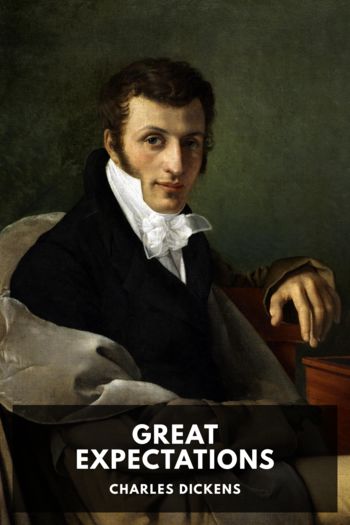
Description
Charles Dickens was a British author, journalist, and editor whose work brought attention to the struggles of Victorian England’s lower classes. His writings provided a candid portrait of the era’s poor and served as inspiration for social change.
Great Expectations, Dickens’ thirteenth novel, was first published in serial form between 1860 and 1861 and is widely praised as the author’s greatest literary accomplishment.
The novel follows the life, relationships, and moral development of an orphan boy named Pip. The novel begins when Pip encounters an escaped convict whom he helps and fears in equal measure. Pip’s actions that day set off a sequence of events and interactions that shape Pip’s character as he matures into adulthood.
The vivid characters, engaging narrative style, and universal themes of Great Expectations establish this novel as a timeless literary classic, and an engaging portrait of Victorian life.

Description
Poul Anderson’s prolific writing career began in 1947, while still an undergraduate physics student at the University of Minnesota, and continued throughout his life. His works were primarily science fiction and fantasy, but he also produced mysteries and historical fiction.
Among his many honors, Anderson was a recipient of three Nebula awards, seven Hugo awards, three Prometheus awards, and an SFWA Grand Master award. He was inducted into the Science Fiction Hall of Fame in 2000.
This collection consists of short stories and novellas published in Worlds of If, Galaxy SF, Fantastic Universe, and other periodicals. Presented in order of publication, they include Innocent at Large, a 1958 story coauthored with his wife and noted author Karen Anderson.
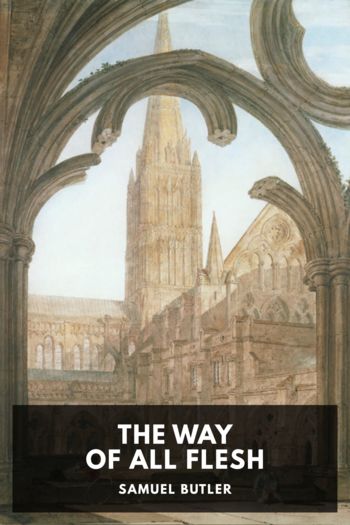
Description
The Way of All Flesh is often considered to be Samuel Butler’s masterpiece, and is frequently included in many lists of best English-language novels of the 20th century. Despite this acclaim, Butler never published it in his lifetime—perhaps because the novel, a scathing, funny, and poignant satire of Victorian life, would have hit his contemporaries too close to home.
The novel traces four generations of the Pontifex family, though the central character is Ernest Pontifex, the third-generation wayward son. The reader follows Ernest through the eyes of his watchful godfather, Mr. Overton, as he strikes out from home to find his way in life. His struggles along the way illustrate the complex relationships between a son and his family, and especially his father; all while satirizing Victorian ideas about family, church, marriage, and schooling.

Description
Ella Cheever Thayer used her experience of being a telegraph operator at the Brunswick Hotel in Boston, Massachusetts, to write Wired Love: A Romance of Dots and Dashes. The story begins when Nathalie Rogers receives a call from another telegrapher, “C,” who manages to make her laugh. Little did they know, this was the beginning of an unusual romance (for the time period) between two people who don’t know anything about each other—not even what they look like. Wired Love was a bestseller for 10 years after it was published.
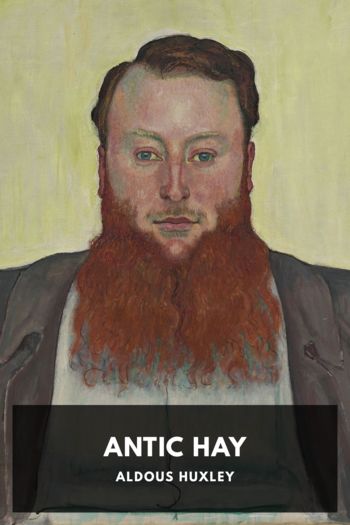
Description
Theodore Gumbril Junior is fed up with his job as a teacher, and tries a new tack as an inventor of pneumatic trousers. The development and marketing of these is set against his attempts to find love, and the backdrop of his friends’ and acquaintances’ similar quest for meaning in what seems to them a meaningless world.
Aldous Huxley, although primarily known these days for his seminal work Brave New World, gained fame in the 1920s as a writer of social satires such as this, his second novel. Condemned at the time for its frank treatment of sexuality and adultery—it was even banned in Australia—the book’s characters’ comic lack of stability following the society-wide alignment of the Great War still resonates today.
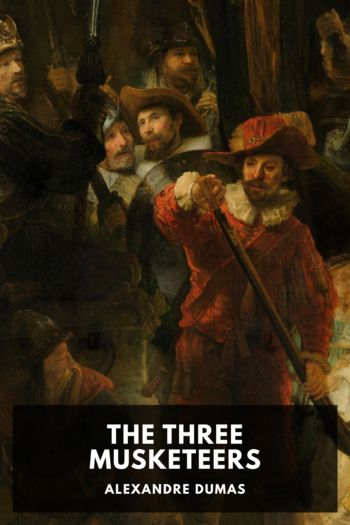
Description
The Three Musketeers is the first of three adventure novels written by Alexandre Dumas featuring the character of d’Artagnan.
The young d’Artagnan leaves home in Gascony for Paris to join the King’s Musketeers. On his way to Paris, the letter which will introduce him to the commander of the Musketeers is stolen by a mysterious man in the town of Meung. This “Man of Meung” turns out to be a confidant of the infamous Cardinal Richelieu, the chief minister of the government of France.
When he arrives in Paris and seeks an audience with the commander of the Musketeers, d’Artagnan sees this man again and rushes to confront him. As he pushes his way out he provokes three inseparable musketeers—Athos, Porthos and Aramis—and ends up setting up duels with all three of them that afternoon. At the first of the duels he discovers, to his surprise, that each of the three is a second to the other. As they start to fight, they are ambushed by the Cardinal’s men and join forces. So begins one of the most enduring partnerships in literature.
When d’Artagnan’s landlord tells him that his wife has been kidnapped, d’Artagnan investigates, falls in love and becomes embroiled in a plot to destabilize France.
The Three Musketeers was first published in 1844 and has been adapted for stage, film, television, and animation many times; such is the endurance of its appeal. At its heart is a fast-paced tale of love and adventure.
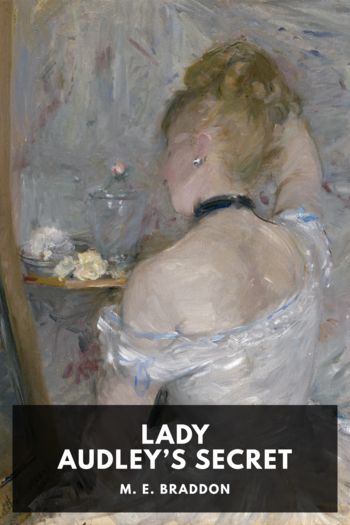
Description
Lady Audley’s Secret was the most successful of a long series of novels written by Mary Elizabeth Braddon in what was then called the “sensation” genre because of the inventive and slightly scandalous plots of such works.
Published in 1862, Lady Audley’s Secret was immediately popular and is said to have made a fortune for its author. It has never been out of print and has been the basis for a number of dramas and movies.
The novel begins with the return from the Australian goldfields of ex-dragoon George Talboys. Three years earlier, in the depths of poverty, he had abandoned his young wife and their baby in order to seek his fortune. He returns to England having made that fortune by finding a huge gold nugget. He enlists the help of his friend Robert Audley, a rather idle young barrister, to seek out his wife. To George’s dismay and overwhelming grief, however, he sees a newspaper notice of the death of his wife only a few days prior to his return.
A year later, when visiting Audley’s relatives and after catching a glimpse of the pretty new wife of Robert’s uncle, George goes missing. Robert becomes increasingly convinced that his friend has met with violence and is dead, and begins to investigate. What he discovers fills him with despair.

Description
Ingred Saxon grew up in luxury in Rotherwood, a large house in southern England, and is looking forwards to moving back in after its wartime usage as a Red Cross hospital. Unfortunately for her, her family is weathering unforeseen financial troubles, and has had to let it out to a different family while they cram into their dramatically smaller bungalow. Even more unfortunately, the popular new girl at Grovebury College is the new tenant, leaving Ingred to remake previous bonds she’d taken for granted.
A Popular Schoolgirl is just one of nearly fifty “schoolgirl fiction” books written by Angela Brazil, and put together they sold over three million copies. As a boarder at a girls’ school herself in her youth, she successfully mined this rich seam of experience to the tune of two novels and several short stories a year. Her protagonists are ultimately believable young women, written in a way that exposes their hopes and fears at a time where possibilities for women were rapidly opening up.

Description
Horothgar, King of the Danes, invites warriors from neighboring kingdoms to his great mead hall with the hope that one of them will solve his problem. A monster named Grendel has been terrorizing the land and killing his people. One of the warriors who answers this call is our epic hero, Beowulf.
The Beowulf Manuscript, also known as the Nowell Codex, dates back to the late 10th century or early 11th century and is the only copy in existence. In 1731, the manuscript was damaged from the Cotton Library fire, making several lines in the poem unreadable. Today, with the help of modern technology, advanced techniques are being used not only to preserve the document from further degradation but also to reveal missing letters. All this is done to ensure that this epic story will continue to live on for many more generations.

Description
Tono-Bungay, published in 1909, is a semi-autobiographical novel by H. G. Wells. Though it has some fantastical and absurdist elements, it is a realist novel rather than one of Well’s “scientific romances.”
The novel is written in the first person from the point of view of George Ponderevo, the son of the housekeeper at a large estate. He is made to feel his inferiority when he is banished after fighting with the son of one of the owner’s aristocratic relatives, and is sent to live with his own poor but religiously fervent relatives. He can’t abide or agree with their religious views and returns to his mother who sends him on to live with his Uncle, Edward Ponderevo, then a local pharmacist in a small town. Uncle Ponderevo, though, has grand plans, and eventually makes a fortune by selling a quack patent medicine he calls “Tono-Bungay.” George joins him in this endeavour and becomes rich himself, eventually turning his interests towards the new science of aeronautics. Meanwhile the Tono-Bungay scheme expands enormously and begins to topple towards its own destruction.
Throughout the novel, George comments cynically on England’s class system, the shabbiness of commerce, and the lies told in advertising. We also follow his unfortunate love life, his unwise marriage, his divorce, and his eventual reconnection with a woman he loved as a child.
Tono-Bungay met with a mixed reception on first release, but has since come to be considered as perhaps Wells’ finest realist novel, an assessment Wells himself shared.

Description
Charles Dickens was a British author, journalist, and editor whose work brought attention to the struggles of Victorian England’s lower classes. His writings provided a candid portrait of the era’s poor and served as inspiration for social change.
Great Expectations, Dickens’ thirteenth novel, was first published in serial form between 1860 and 1861 and is widely praised as the author’s greatest literary accomplishment.
The novel follows the life, relationships, and moral development of an orphan boy named Pip. The novel begins when Pip encounters an escaped convict whom he helps and fears in equal measure. Pip’s actions that day set off a sequence of events and interactions that shape Pip’s character as he matures into adulthood.
The vivid characters, engaging narrative style, and universal themes of Great Expectations establish this novel as a timeless literary classic, and an engaging portrait of Victorian life.

Description
Poul Anderson’s prolific writing career began in 1947, while still an undergraduate physics student at the University of Minnesota, and continued throughout his life. His works were primarily science fiction and fantasy, but he also produced mysteries and historical fiction.
Among his many honors, Anderson was a recipient of three Nebula awards, seven Hugo awards, three Prometheus awards, and an SFWA Grand Master award. He was inducted into the Science Fiction Hall of Fame in 2000.
This collection consists of short stories and novellas published in Worlds of If, Galaxy SF, Fantastic Universe, and other periodicals. Presented in order of publication, they include Innocent at Large, a 1958 story coauthored with his wife and noted author Karen Anderson.

Description
The Way of All Flesh is often considered to be Samuel Butler’s masterpiece, and is frequently included in many lists of best English-language novels of the 20th century. Despite this acclaim, Butler never published it in his lifetime—perhaps because the novel, a scathing, funny, and poignant satire of Victorian life, would have hit his contemporaries too close to home.
The novel traces four generations of the Pontifex family, though the central character is Ernest Pontifex, the third-generation wayward son. The reader follows Ernest through the eyes of his watchful godfather, Mr. Overton, as he strikes out from home to find his way in life. His struggles along the way illustrate the complex relationships between a son and his family, and especially his father; all while satirizing Victorian ideas about family, church, marriage, and schooling.

Description
Ella Cheever Thayer used her experience of being a telegraph operator at the Brunswick Hotel in Boston, Massachusetts, to write Wired Love: A Romance of Dots and Dashes. The story begins when Nathalie Rogers receives a call from another telegrapher, “C,” who manages to make her laugh. Little did they know, this was the beginning of an unusual romance (for the time period) between two people who don’t know anything about each other—not even what they look like. Wired Love was a bestseller for 10 years after it was published.

Description
Theodore Gumbril Junior is fed up with his job as a teacher, and tries a new tack as an inventor of pneumatic trousers. The development and marketing of these is set against his attempts to find love, and the backdrop of his friends’ and acquaintances’ similar quest for meaning in what seems to them a meaningless world.
Aldous Huxley, although primarily known these days for his seminal work Brave New World, gained fame in the 1920s as a writer of social satires such as this, his second novel. Condemned at the time for its frank treatment of sexuality and adultery—it was even banned in Australia—the book’s characters’ comic lack of stability following the society-wide alignment of the Great War still resonates today.

Description
The Three Musketeers is the first of three adventure novels written by Alexandre Dumas featuring the character of d’Artagnan.
The young d’Artagnan leaves home in Gascony for Paris to join the King’s Musketeers. On his way to Paris, the letter which will introduce him to the commander of the Musketeers is stolen by a mysterious man in the town of Meung. This “Man of Meung” turns out to be a confidant of the infamous Cardinal Richelieu, the chief minister of the government of France.
When he arrives in Paris and seeks an audience with the commander of the Musketeers, d’Artagnan sees this man again and rushes to confront him. As he pushes his way out he provokes three inseparable musketeers—Athos, Porthos and Aramis—and ends up setting up duels with all three of them that afternoon. At the first of the duels he discovers, to his surprise, that each of the three is a second to the other. As they start to fight, they are ambushed by the Cardinal’s men and join forces. So begins one of the most enduring partnerships in literature.
When d’Artagnan’s landlord tells him that his wife has been kidnapped, d’Artagnan investigates, falls in love and becomes embroiled in a plot to destabilize France.
The Three Musketeers was first published in 1844 and has been adapted for stage, film, television, and animation many times; such is the endurance of its appeal. At its heart is a fast-paced tale of love and adventure.

Description
Lady Audley’s Secret was the most successful of a long series of novels written by Mary Elizabeth Braddon in what was then called the “sensation” genre because of the inventive and slightly scandalous plots of such works.
Published in 1862, Lady Audley’s Secret was immediately popular and is said to have made a fortune for its author. It has never been out of print and has been the basis for a number of dramas and movies.
The novel begins with the return from the Australian goldfields of ex-dragoon George Talboys. Three years earlier, in the depths of poverty, he had abandoned his young wife and their baby in order to seek his fortune. He returns to England having made that fortune by finding a huge gold nugget. He enlists the help of his friend Robert Audley, a rather idle young barrister, to seek out his wife. To George’s dismay and overwhelming grief, however, he sees a newspaper notice of the death of his wife only a few days prior to his return.
A year later, when visiting Audley’s relatives and after catching a glimpse of the pretty new wife of Robert’s uncle, George goes missing. Robert becomes increasingly convinced that his friend has met with violence and is dead, and begins to investigate. What he discovers fills him with despair.

Description
Ingred Saxon grew up in luxury in Rotherwood, a large house in southern England, and is looking forwards to moving back in after its wartime usage as a Red Cross hospital. Unfortunately for her, her family is weathering unforeseen financial troubles, and has had to let it out to a different family while they cram into their dramatically smaller bungalow. Even more unfortunately, the popular new girl at Grovebury College is the new tenant, leaving Ingred to remake previous bonds she’d taken for granted.
A Popular Schoolgirl is just one of nearly fifty “schoolgirl fiction” books written by Angela Brazil, and put together they sold over three million copies. As a boarder at a girls’ school herself in her youth, she successfully mined this rich seam of experience to the tune of two novels and several short stories a year. Her protagonists are ultimately believable young women, written in a way that exposes their hopes and fears at a time where possibilities for women were rapidly opening up.

Description
Horothgar, King of the Danes, invites warriors from neighboring kingdoms to his great mead hall with the hope that one of them will solve his problem. A monster named Grendel has been terrorizing the land and killing his people. One of the warriors who answers this call is our epic hero, Beowulf.
The Beowulf Manuscript, also known as the Nowell Codex, dates back to the late 10th century or early 11th century and is the only copy in existence. In 1731, the manuscript was damaged from the Cotton Library fire, making several lines in the poem unreadable. Today, with the help of modern technology, advanced techniques are being used not only to preserve the document from further degradation but also to reveal missing letters. All this is done to ensure that this epic story will continue to live on for many more generations.